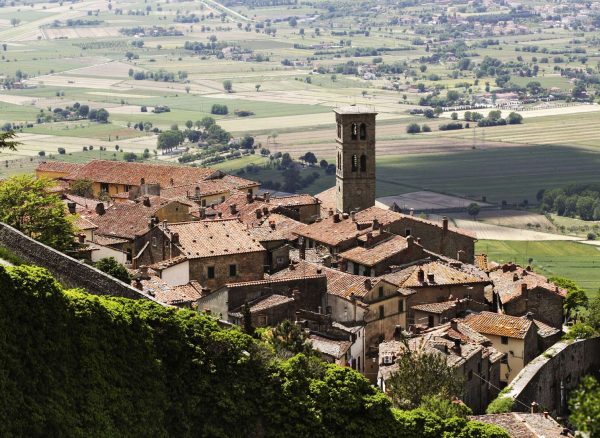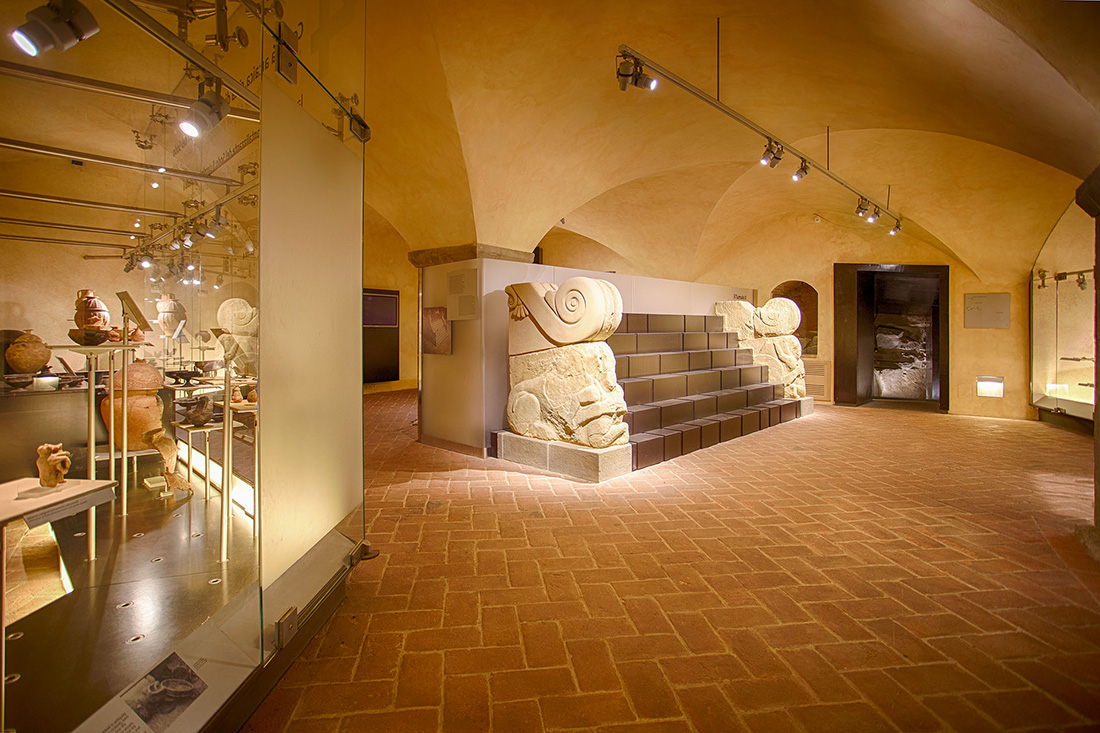
Cortona
Founded by the Etruscans, it is today one of the oldest and most picturesque hill towns in Tuscany, not far from the Umbrian shores of Lake Trasimeno. Here the visitor can start an authentic journey through the history of one of the richest and most powerful Etruscan cities. The itinerary starts from the MAEC – Museum of the Etruscan Academy and of the City of Cortona, which houses some of the most extraordinary masterpieces produced by this civilization. It continues in the city, with the mighty walls, the Porta Bifora (a double-arched gate) and a series of hypogeal remains. Near the city, the plain is dominated by the “meloni”, Etruscan tombs of the archaic age, among which the Tumulo II del Sodo stands out, with its spectacular staircase-terrace decorated with sculptural and architectural elements in an orientalising style. On the foothills, among the olive groves, you can visit the Tanella di Pitagora, a monument known since 1500, the Tanella Angori and the Tomb of Mezzavia. Towards the Trasimeno, there are the remains of the Villa di Ossaia of the late-republican and imperial age.
21580
INHABITANTS
ITALY
COUNTRY
343
km²

Great power in mediaeval times, it was able to resist Siena and Arezzo. Today it is a fascinating tangle of old streets and mediaeval buildings, such as the Town Hall in Piazza Signorelli. The small Diocesan Museum exhibits several interesting paintings and the majestic Annunciation by Fra Angelico.
Signorelli, born in Cortona, is buried in the Church of San Francesco (built in 1245), where the Annunciation by the other local artist, Pietro da Cortona, in Baroque style, is kept. The Madonna del Calcinaio (1485), a beautiful Renaissance church, is located on the southern outskirts of the city.
Website: www.comunedicortona.it

